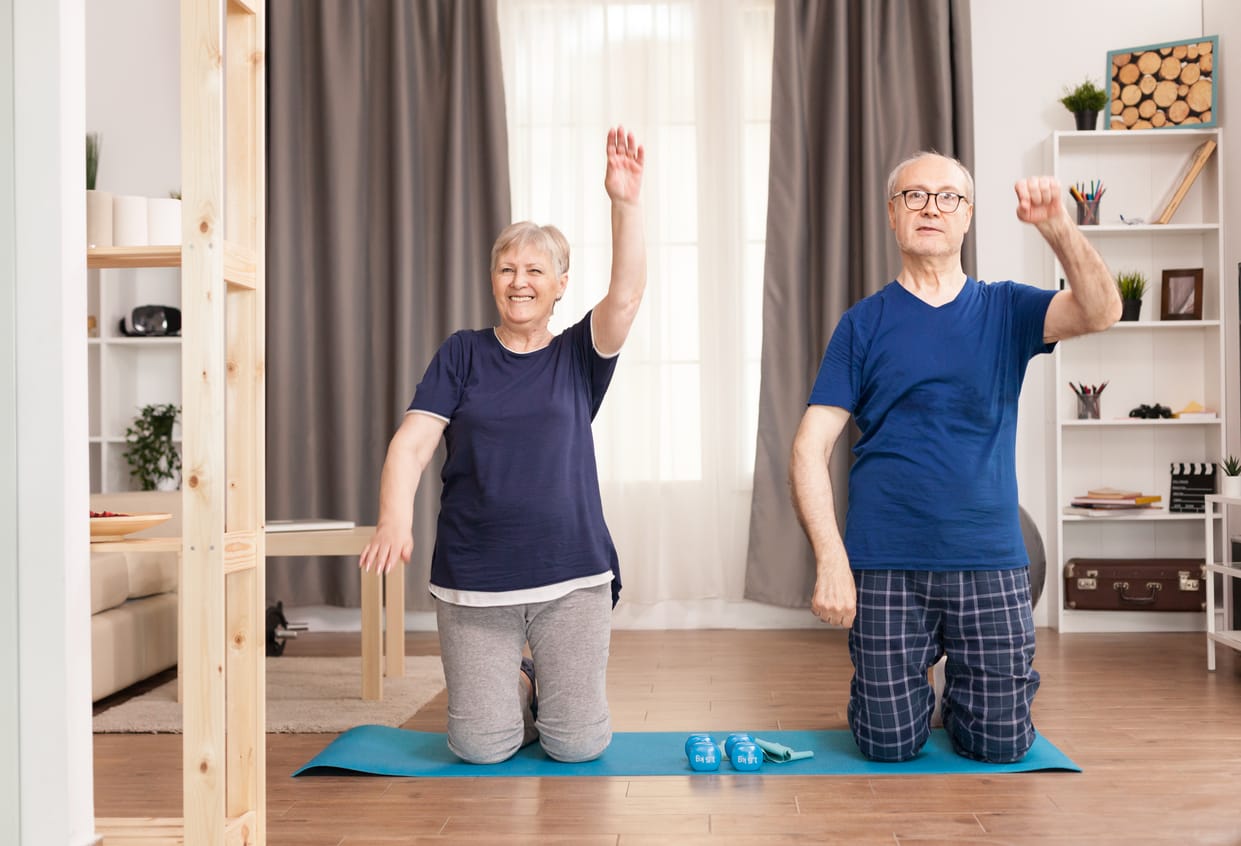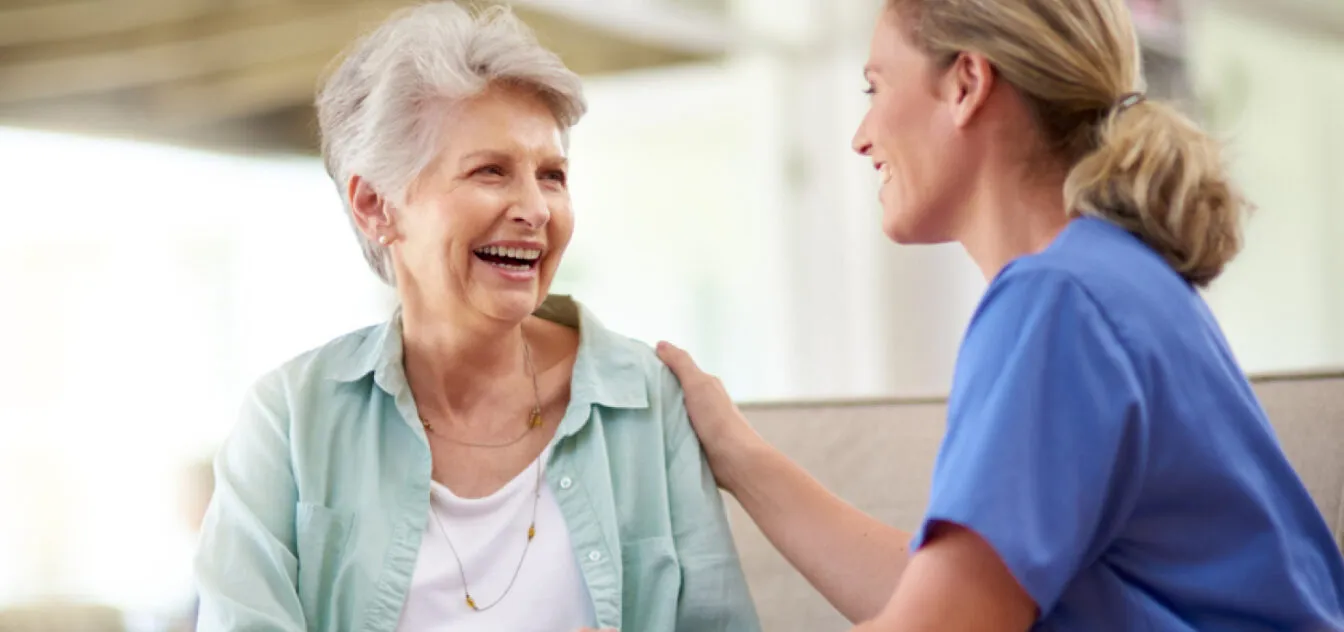Alzheimer's disease is a progressive neurological disorder that deeply affects memory, thinking, and behavior, creating challenges for your elderly loved ones and their families. The significant impact of this condition on seniors is often evident. However, proactive steps can be taken to support their health and well-being by promoting physical activity. Regular exercise not only maintains physical health but also reduces the risk of Alzheimer's. Encouraging and helping seniors stay active can enhance their quality of life and potentially delay the onset of cognitive decline.
Understanding Alzheimer's and Its Risk Factors
Alzheimer's disease is a progressive neurological disorder that causes the gradual decline of memory, thinking, and behavior. This condition can deeply affect your elderly loved ones, with age being one of the most significant risk factors. The likelihood of developing Alzheimer's increases as people get older. Genetics also play a key role; having a family history of Alzheimer's can elevate the risk. However, lifestyle choices are another critical factor that can be influenced. A sedentary lifestyle, poor diet, and lack of mental stimulation are all associated with an increased risk of Alzheimer's. In fact, a study published in the Journal of the American Medical Association (JAMA) found that individuals with a higher level of physical activity had a lower risk of developing Alzheimer's disease compared to those with lower levels of activity.
Understanding these risk factors empowers us to take preventive measures. By encouraging your elderly loved ones to engage in regular physical activity, you can help maintain their overall health and potentially reduce the risk of Alzheimer's. Promoting a balanced diet rich in nutrients and antioxidants, along with encouraging mental engagement through activities like puzzles, reading, or social interactions, can also play a significant role. Taking these steps not only supports physical and cognitive health but also enhances the overall quality of life for seniors, giving them the best possible chance to live well despite the challenges posed by aging and Alzheimer's.
The Role of Physical Exercise in Alzheimer's Prevention
Physical exercise is a crucial aspect of maintaining overall health and well-being, especially for your senior loved ones. Beyond its general health benefits, regular physical activity plays a significant role in brain health and can be an effective measure in preventing Alzheimer's disease. Caregivers can help seniors incorporate physical exercise into their daily routines, offering numerous cognitive and physical benefits.
- Increased Blood Flow to the Brain: Physical exercise boosts blood circulation, ensuring that essential nutrients and oxygen are delivered to brain cells. This increased blood flow helps keep the brain nourished and functioning optimally for your senior loved ones.
- Promotion of New Brain Cells: Engaging in physical activity encourages the growth of new brain cells, a process known as neurogenesis. This is vital for maintaining overall brain health and cognitive function, especially as our loved ones age.
- Enhanced Neuroplasticity: Regular exercise enhances the brain's ability to adapt and reorganize itself, a quality known as neuroplasticity. This adaptability is crucial for maintaining cognitive functions like memory and problem-solving skills in your senior loved ones.
- Reduction of Inflammation and Oxidative Stress: Physical activity helps lower levels of inflammation and oxidative stress in the body, both of which are associated with cognitive decline and Alzheimer's disease. By reducing these harmful factors, exercise can help protect brain health.
- Lower Risk of Cognitive Decline: Research indicates that individuals who engage in regular physical activity have a lower risk of developing Alzheimer's disease compared to those who are sedentary. This suggests that exercise has a protective effect on the brain.
- Improvement in Cognitive Function: Activities such as walking, swimming, and yoga can significantly improve cognitive functions like memory, attention, and overall mental well-being. These improvements can help senior loved ones maintain their independence and quality of life.
- Support for Physical and Mental Health: Regular exercise not only benefits physical health by improving strength and mobility but also supports mental well-being. Engaging in physical activities can lead to a higher quality of life, making it an essential component of daily routines for your senior loved ones. By encouraging and facilitating regular physical exercise, you can play a vital role in promoting the long-term health and happiness of seniors you care for.
Types of Physical Exercises for Reducing Alzheimer's Risk
Keeping seniors active and engaged is crucial for supporting their overall health and well-being. One effective way to reduce the risk of Alzheimer's disease is through regular physical exercise. Here are some types of exercises that can benefit your loved ones:
Aerobic Exercises
Aerobic exercises are great for improving cardiovascular health and increasing oxygen flow to the brain. Examples include walking, swimming, and cycling. These activities are not only enjoyable but also help keep the heart healthy and the brain sharp. Walking can be done almost anywhere and is a low-impact option suitable for most seniors. Swimming offers a full-body workout with minimal joint strain, making it ideal for those with arthritis. Cycling, whether on a stationary bike or outdoors, is another excellent option that can be adapted to different fitness levels. Encouraging your loved ones to participate in these activities regularly can make a significant difference in their overall health and mental acuity.
Strength Training
Strength training involves exercises like light weightlifting and resistance band workouts. These activities are essential for maintaining muscle mass, supporting joint health, and improving balance. As our loved ones age, it's crucial to preserve muscle strength to help them stay independent and reduce the risk of falls. Strength training can also enhance metabolic health, support bone density, and increase overall functional capacity. Simple exercises like bicep curls, leg lifts, and squats can be done at home with minimal equipment. Resistance bands are particularly useful for providing varying levels of difficulty, allowing for gradual progression. Incorporating strength training into a regular exercise routine can help your loved ones maintain their physical independence and reduce the risk of injury.
Flexibility and Balance Exercises
Flexibility and balance exercises, such as yoga, Tai Chi, and stretching, are excellent for enhancing mobility and reducing the risk of falls. These exercises also promote relaxation and can help your loved ones feel more at ease. Yoga improves flexibility, strength, and breathing, while also providing a meditative component that can reduce stress and anxiety. Tai Chi, with its slow, deliberate movements, enhances balance and coordination, making it particularly beneficial for fall prevention. Regular stretching helps maintain the range of motion in joints and muscles, preventing stiffness and discomfort. Incorporating these activities into their routine can improve their physical flexibility, balance, and overall sense of well-being.
Mind-Body Exercises
Mind-body exercises, like dance and Pilates, combine physical activity with mental engagement. These exercises enhance coordination and provide a fun way to stay active. Dance, in particular, can be a joyful and social activity that encourages seniors to move and stay mentally sharp. Whether it's a structured dance class or simply moving to music at home, dance helps improve coordination, balance, and cardiovascular health. Pilates focuses on core strength, flexibility, and controlled movements, promoting overall body awareness and balance. These mind-body exercises also stimulate cognitive function by requiring attention, memory, and coordination, making them a holistic option for maintaining both physical and mental health.
Monitoring and Adapting Exercise Routines
When it comes to keeping your senior loved ones active, it's essential to monitor and adapt their exercise routines to ensure they are safe and beneficial. Caregivers play a crucial role in this process by working closely with healthcare professionals and being attentive to seniors' needs.
Regular Check-Ins with Healthcare Providers
Before starting any new exercise regimen, it's important to consult with healthcare professionals. Doctors and physical therapists can provide valuable guidance tailored to your loved ones' specific health conditions and limitations. They can recommend suitable exercises and set realistic goals that align with their overall health plan. Regular check-ins with healthcare providers also allow us to monitor progress and make necessary adjustments. This ongoing communication helps ensure that the exercise routines remain appropriate as your loved ones' health and abilities change over time.
Listening to the Body
It's crucial to pay attention to your loved ones' bodies and recognize signs of overexertion or discomfort. Symptoms like shortness of breath, dizziness, pain, or unusual fatigue may indicate that an exercise is too strenuous or not suitable. In such cases, it's important to adapt the exercise routine to ensure safety and comfort. This might involve reducing the intensity or duration of activities, incorporating more rest periods, or switching to less demanding exercises. By being responsive to your loved ones' physical cues, you can help prevent injuries and ensure that their exercise routines remain enjoyable and beneficial. A study published in the British Journal of Sports Medicine found that regular physical activity can improve cognitive function and reduce the risk of dementia in older adults.
Monitoring and adapting exercise routines is an ongoing process that requires vigilance and flexibility. By working closely with healthcare professionals and staying attuned to your loved ones' needs, you can help them maintain an active lifestyle that promotes health and well-being. The role of a caregiver includes not only encouraging physical activity but also ensuring it is safe and sustainable for seniors.
The Broader Impact of Physical Activity
Incorporating physical activity into the lives of seniors offers a range of benefits that extend beyond just physical health. Caregivers recognize that exercise plays a significant role in enhancing both mental well-being and social engagement for seniors.
Mental and Emotional Benefits
Physical activity offers numerous mental and emotional advantages for your senior loved ones. Regular exercise goes beyond physical health, positively influencing mood and emotional well-being. Here’s how:
- Boosts Mood: Regular exercise releases endorphins, which can improve mood and create a sense of well-being. This natural mood enhancement helps your loved ones feel more positive and energetic.
- Reduces Anxiety and Depression: Physical activity helps alleviate symptoms of anxiety and depression by promoting mental relaxation and reducing stress levels. By incorporating exercise into their routine, your loved ones can experience greater emotional stability and reduced feelings of sadness.
- Enhances Overall Quality of Life: Engaging in regular exercise fosters a sense of accomplishment and purpose, contributing to a more fulfilling and positive outlook on life. This improved quality of life results from both the physical benefits of exercise and the mental satisfaction of achieving personal fitness goals.
Social Benefits
In addition to mental and emotional benefits, physical activity also plays a key role in enhancing social interactions and community engagement for senior loved ones. Here’s how:
- Opportunities for Social Interaction: Participating in group exercises or community activities allows for meaningful social interactions, helping to reduce feelings of loneliness and isolation. Engaging with others in a shared activity creates valuable connections and supports emotional well-being.
- Community Engagement: Exercise groups and community events provide chances for your loved ones to connect with others, strengthening their sense of belonging. Being part of a community through physical activity helps them feel more integrated and valued.
- Strengthening Bonds with Loved Ones: Shared physical activities, such as family walks or group fitness classes, offer quality time and enhance relationships through shared experiences. These moments not only contribute to better physical health but also deepen your connections and create lasting memories together.
In conclusion, incorporating physical exercise into the daily routines of your senior loved ones is a powerful way to lower the risk of Alzheimer's disease and enhance their overall well-being. Regular activity supports cardiovascular health, boosts brain function, and improves mental and emotional health while fostering valuable social connections. Caregivers play a vital role in encouraging and facilitating physical activities, whether through walks, home workouts, or community programs. By actively supporting seniors in maintaining a healthy, active lifestyle, caregivers help them enjoy a richer, more fulfilling life with improved health and greater happiness.



